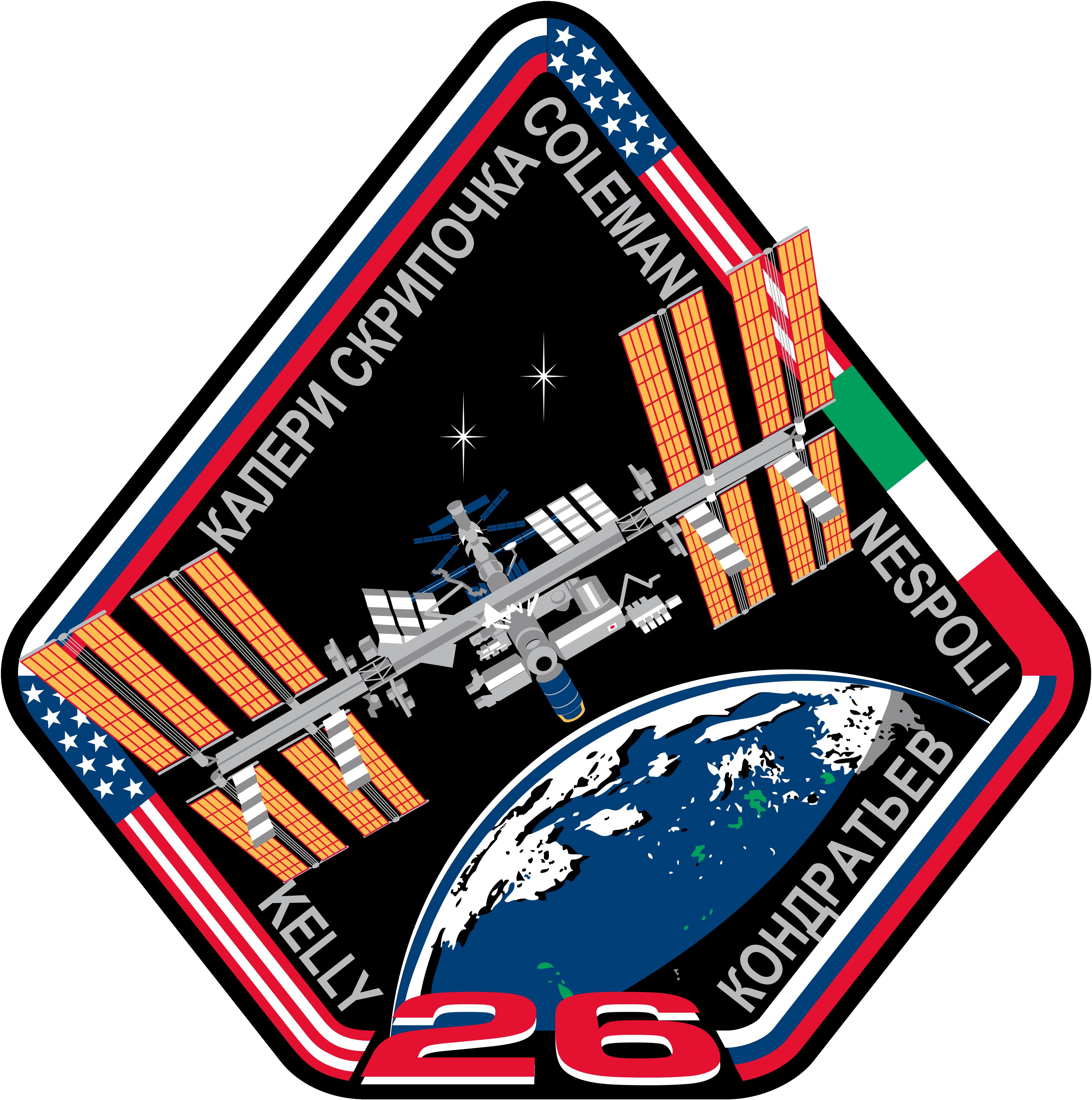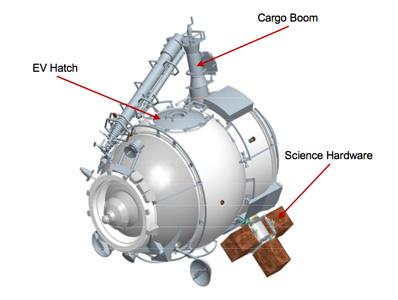|
Expedition 27
Expedition 27 was the 27th long-duration expedition to the International Space Station (ISS), starting on 16 March 2011. Expedition 27 saw numerous notable events, including the undocking of the Progress M-09M and Kounotori 2 spacecraft, the arrival of the Soyuz TMA-21 and Progress M-10M spacecraft, and the final rendezvous with the ISS of NASA's Space Shuttle ''Endeavour, on its last mission, STS-134. The expedition ended on 23 May 2011 with the departure of the Soyuz TMA-20 spacecraft, although command of the station was ceremonially handed over to the crew of Expedition 28 on 22 May. Crew ;Source: NASA Mission highlights Kounotori 2 undocking After an extended two-month stay, Kounotori 2 was detached from the nadir docking port of the ''Harmony'' module by the Canadarm 2 robotic arm at 15:29 UTC on 28 March 2011, and released at 15:46 UTC. Launched in January 2011 to resupply the ISS, Kounotori 2 (also known as HTV-2) was the second Japanese H-II Transfer Vehicle. ... [...More Info...] [...Related Items...] OR: [Wikipedia] [Google] [Baidu] |
Dmitri Kondratyev
Dmitri Yuryevich Kondratyev (russian: Дмитрий Юрьевич Кондратьев, born on 25 May 1969 in Irkutsk, Russia) is a retired Russian cosmonaut. He served as a crew member on the International Space Station long duration mission Expedition 27 as Commander, having also served as a Flight Engineer on Expedition 26 during the same stay in space. Kondratyev traveled to space for the first time aboard the Soyuz TMA-20 spacecraft in December 2010. Personal Kondratyev is married to Dinara, and they have a son named Vladislav. His parents, Yuri Semyonovich Kondratyev and Valentina Dmitriyevna Kondratyeva (née Zaozyornova), reside in Alma-Aty, Kazakhstan. His pastimes include computers, karate, economics and fishing. Education Kondratyev completed Yak-52 flight training at the Alma-Aty Aviation Club in 1986. In 1990, he entered the Kacha Air Force Pilot School graduating in 1990 as a pilot-engineer. In 2000, Kondratyev graduated from the Moscow State University for Eco ... [...More Info...] [...Related Items...] OR: [Wikipedia] [Google] [Baidu] |
STS-134
STS-134 ( ISS assembly flight ULF6) was the penultimate mission of NASA's Space Shuttle program and the 25th and last spaceflight of . This flight delivered the Alpha Magnetic Spectrometer and an ExPRESS Logistics Carrier to the International Space Station. Mark Kelly served as the mission commander. STS-134 was expected to be the final Space Shuttle mission if STS-135 did not receive funding from Congress. However, in February 2011, NASA stated that STS-135 would fly "regardless" of the funding situation.STS-134 Mission Status Spaceflight Now. STS-135, flown by ''Atlantis'', took advantage of the processing for STS-335 [...More Info...] [...Related Items...] OR: [Wikipedia] [Google] [Baidu] |
Oxygen
Oxygen is the chemical element with the symbol O and atomic number 8. It is a member of the chalcogen group in the periodic table, a highly reactive nonmetal, and an oxidizing agent that readily forms oxides with most elements as well as with other compounds. Oxygen is Earth's most abundant element, and after hydrogen and helium, it is the third-most abundant element in the universe. At standard temperature and pressure, two atoms of the element bind to form dioxygen, a colorless and odorless diatomic gas with the formula . Diatomic oxygen gas currently constitutes 20.95% of the Earth's atmosphere, though this has changed considerably over long periods of time. Oxygen makes up almost half of the Earth's crust in the form of oxides.Atkins, P.; Jones, L.; Laverman, L. (2016).''Chemical Principles'', 7th edition. Freeman. Many major classes of organic molecules in living organisms contain oxygen atoms, such as proteins, nucleic acids, carbohydrates, and fats, as ... [...More Info...] [...Related Items...] OR: [Wikipedia] [Google] [Baidu] |
Spacecraft Cemetery
The spacecraft cemetery, known more formally as the South Pacific Ocean(ic) Uninhabited Area, is a region in the southern Pacific Ocean east of New Zealand, where spacecraft that have reached the end of their usefulness are routinely crashed. The area is roughly centered on "Point Nemo", the oceanic pole of inaccessibility, the location farthest from any land. The defunct space station ''Mir'' and six Salyut stations are among those that have been ditched there. Other spacecraft that have been routinely scuttled in the region include various cargo spacecraft to the International Space Station, including Russian ''Progress'' cargo craft, the Japan Aerospace Exploration Agency H-II Transfer Vehicle, and the European Space Agency's Automated Transfer Vehicle. A total of more than 263 spacecraft were disposed in this area between 1971 and 2016. The International Space Station is slated to end up in the spacecraft cemetery upon "retirement". Current considerations of the sp ... [...More Info...] [...Related Items...] OR: [Wikipedia] [Google] [Baidu] |
Plasma (physics)
Plasma () 1, where \nu_ is the electron gyrofrequency and \nu_ is the electron collision rate. It is often the case that the electrons are magnetized while the ions are not. Magnetized plasmas are ''anisotropic'', meaning that their properties in the direction parallel to the magnetic field are different from those perpendicular to it. While electric fields in plasmas are usually small due to the plasma high conductivity, the electric field associated with a plasma moving with velocity \mathbf in the magnetic field \mathbf is given by the usual Lorentz force, Lorentz formula \mathbf = -\mathbf\times\mathbf, and is not affected by Debye shielding. Mathematical descriptions To completely describe the state of a plasma, all of the particle locations and velocities that describe the electromagnetic field in the plasma region would need to be written down. However, it is generally not practical or necessary to keep track of all the particles in a plasma. Therefore, plasma physicist ... [...More Info...] [...Related Items...] OR: [Wikipedia] [Google] [Baidu] |
Pirs (ISS Module)
''Pirs'' ''(russian: Пирс'', meaning "pier") – also called Stykovochny Otsek 1 (SO-1; russian: Стыковочный отсек, "docking module") and DC-1 (Docking Compartment 1) – was a Russian module on the International Space Station (ISS). ''Pirs'' was launched on 14 September 2001, and was located on the '' Zvezda'' module of the station. It provided the ISS with one docking port for Soyuz and Progress spacecraft, and allowed egress and ingress for spacewalks by cosmonauts using Russian Orlan space suits. ''Pirs'' was docked to ''Zvezda'' for almost 20 years, until 26 July 2021, where it was decommissioned and undocked by Progress MS-16 to make way for the new '' Nauka'' module. Poisk module A second docking compartment, Stykovochniy Otsek 2 (SO-2), was planned with the same design. However, when the Russian segment of the ISS was redesigned in 2001, the new design no longer included the SO-2, and its construction was canceled. After another change of plans th ... [...More Info...] [...Related Items...] OR: [Wikipedia] [Google] [Baidu] |
Yuri Gagarin
Yuri Alekseyevich Gagarin; Gagarin's first name is sometimes transliterated as ''Yuriy'', ''Youri'', or ''Yury''. (9 March 1934 – 27 March 1968) was a Soviet pilot and cosmonaut who became the first human to journey into outer space. Travelling in the Vostok 1 capsule, Gagarin completed one orbit of Earth on 12 April 1961. By achieving this major milestone in the Space Race he became an international celebrity, and was awarded many medals and titles, including Hero of the Soviet Union, his nation's highest honour. Gagarin was born in the Russian village of Klushino, and in his youth was a foundryman at a steel plant in Lyubertsy. He later joined the Soviet Air Forces as a pilot and was stationed at the Luostari/Pechenga (air base), Luostari Air Base, near the Norwegian border, before his selection for the Soviet space programme with five other cosmonauts. Following his spaceflight, Gagarin became deputy training director of the Yuri Gagarin Cosmonaut Training Center, Cos ... [...More Info...] [...Related Items...] OR: [Wikipedia] [Google] [Baidu] |
Soviet Union
The Soviet Union,. officially the Union of Soviet Socialist Republics. (USSR),. was a transcontinental country that spanned much of Eurasia from 1922 to 1991. A flagship communist state, it was nominally a federal union of fifteen national republics; in practice, both its government and its economy were highly centralized until its final years. It was a one-party state governed by the Communist Party of the Soviet Union, with the city of Moscow serving as its capital as well as that of its largest and most populous republic: the Russian SFSR. Other major cities included Leningrad (Russian SFSR), Kiev (Ukrainian SSR), Minsk ( Byelorussian SSR), Tashkent (Uzbek SSR), Alma-Ata (Kazakh SSR), and Novosibirsk (Russian SFSR). It was the largest country in the world, covering over and spanning eleven time zones. The country's roots lay in the October Revolution of 1917, when the Bolsheviks, under the leadership of Vladimir Lenin, overthrew the Russian Provisional Government ... [...More Info...] [...Related Items...] OR: [Wikipedia] [Google] [Baidu] |
Andes Mountains
The Andes, Andes Mountains or Andean Mountains (; ) are the List of mountain ranges#Mountain ranges by length, longest continental mountain range in the world, forming a continuous highland along the western edge of South America. The range is long, wide (widest between 18th parallel south, 18°S – 20th parallel south, 20°S latitude), and has an average height of about . The Andes extend from north to south through seven South American countries: Venezuela, Colombia, Ecuador, Peru, Bolivia, Chile, and Argentina. Along their length, the Andes are split into several ranges, separated by intermediate depression (geology), depressions. The Andes are the location of several high plateaus—some of which host major cities such as Quito, Bogotá, Cali, Arequipa, Medellín, Bucaramanga, Sucre, Mérida, Mérida, Mérida, El Alto and La Paz. The Altiplano, Altiplano plateau is the world's second-highest after the Tibetan plateau. These ranges are in turn grouped into three major di ... [...More Info...] [...Related Items...] OR: [Wikipedia] [Google] [Baidu] |
Poisk (ISS Module)
''Poisk'' (russian: Поиск, , Search), also known as the Mini-Research Module 2 (MRM 2), , or ''МИМ 2'', is a docking module of the International Space Station The International Space Station (ISS) is the largest modular space station currently in low Earth orbit. It is a multinational collaborative project involving five participating space agencies: NASA (United States), Roscosmos (Russia), JAXA .... Its original name was Docking Module 2 (, SO-2), as it is almost identical to the Pirs (ISS module), ''Pirs'' Docking Compartment. Added in 2009, ''Poisk'' was the first major Russian addition to the International Space Station since 2001. ''Poisk'' is overall the same design as the docking module ''Pirs''. Whereas ''Pirs'' had been attached to the nadir ("bottom") port of Zvezda (ISS module), ''Zvezda'', ''Poisk'' is attached to the zenith ("top"); ''Pirs'' was closer to the Earth with the ISS in its usual orientation, and ''Poisk'' is on the other side. ''Poisk' ... [...More Info...] [...Related Items...] OR: [Wikipedia] [Google] [Baidu] |
Baikonur Cosmodrome
The Baikonur Cosmodrome ( kk, Байқоңыр ғарыш айлағы, translit=Baiqoñyr ğaryş ailağy, ; russian: Космодром Байконур, translit=Kosmodrom Baykonur, ) is a spaceport in an area of southern Kazakhstan leased to Russia. The Cosmodrome is the world's first spaceport for orbital and human launches and the largest (in area) operational Spaceport, space launch facility. All crewed Russian spaceflights are launched from Baikonur. The spaceport is in the Kazakh Steppe, desert steppe of Baikonur, about east of the Aral Sea and north of the river Syr Darya. It is near the Tyuratam railway station and is about above sea level. The spaceport is currently leased by the Government of Kazakhstan, Kazakh Government to the Russian Federation until 2050 and is managed jointly by the Roscosmos State Corporation, Roscosmos and the Russian Aerospace Forces. The shape of the area leased is an ellipse, measuring east–west by north–south, with the cosmodrome at ... [...More Info...] [...Related Items...] OR: [Wikipedia] [Google] [Baidu] |






.jpg)
.jpg)

